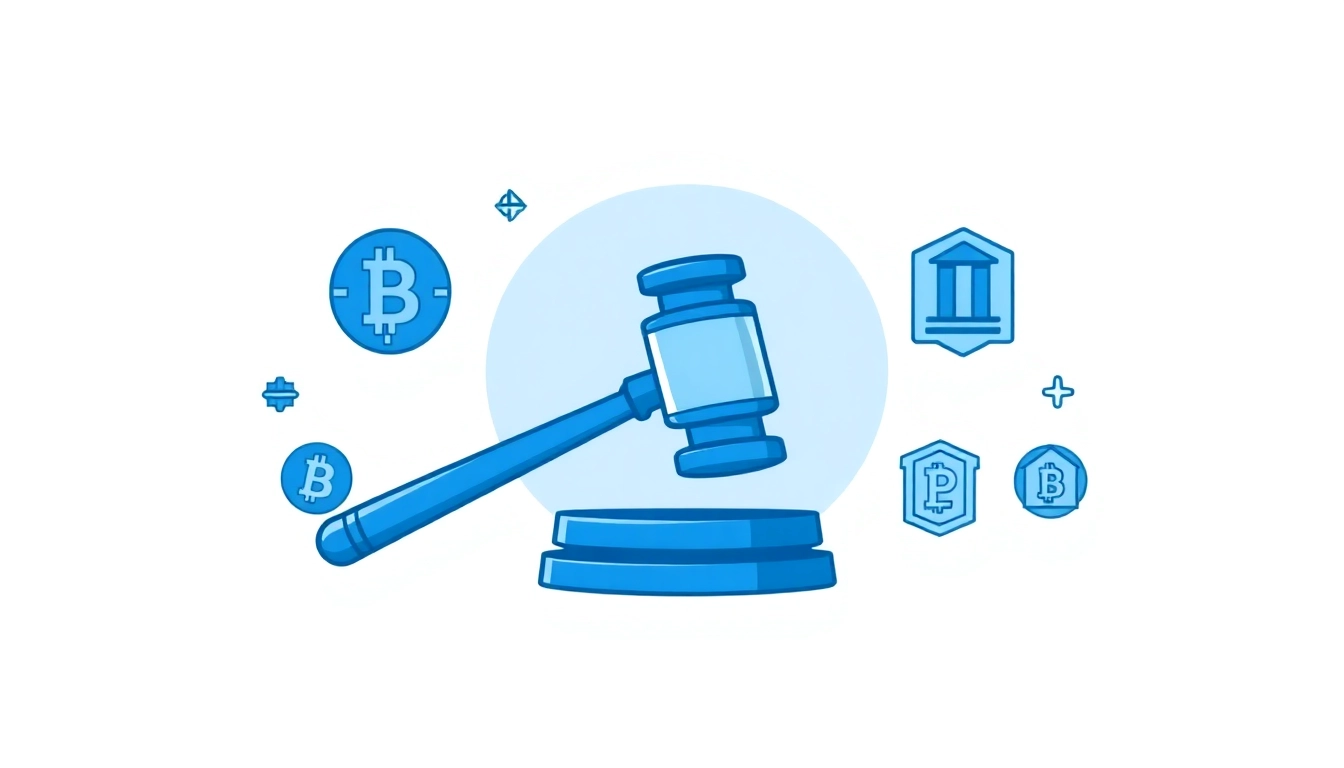Understanding the Foundations of Crypto Regulation
Cryptocurrencies have revolutionized the financial landscape by introducing decentralized digital assets that operate beyond traditional banking systems. As their popularity surges, governments worldwide are grappling with establishing effective crypto regulation. These regulations are vital for securing investors, preventing illicit activities, and fostering innovation while maintaining financial stability. To comprehend the current state and future trajectory of crypto regulation, it is essential to understand what crypto regulation entails and how it has evolved globally.
What Is Crypto Regulation and Why It Matters
Crypto regulation refers to the legal frameworks, guidelines, and policies that govern the issuance, trading, and usage of digital assets. These rules aim to clarify the legal status of cryptocurrencies, define the responsibilities of stakeholders, and mitigate risks such as fraud, money laundering, and market manipulation. Proper regulation enhances transparency, boosts investor confidence, and fosters adoption. Conversely, a lack of regulation or inconsistent policies can lead to market volatility, scams, and systemic risks, underlining the importance of thoughtful legislative approaches.
Historical Evolution of Cryptocurrency Laws Worldwide
The journey of crypto regulation began around 2013 when countries like Japan and the US started to recognize digital currencies as legitimate forms of payment or assets. Early regulations primarily focused on anti-money laundering (AML) and know-your-customer (KYC) measures. Since then, nations have adopted varied strategies: some implementing comprehensive frameworks (e.g., European Union with MiCA), others adopting a more permissive or restrictive stance. Jurisdictions such as China have imposed outright bans, while others like Switzerland foster a friendly environment for blockchain innovation. This patchwork reflects differing economic priorities, legal traditions, and risk appetites.
Core Principles Governing Crypto Regulations
Effective crypto regulation is grounded in several core principles:
- Protection of Consumers and Investors: Ensuring transparency and fairness to prevent fraud and scams.
- Prevention of Financial Crime: Implementing AML and KYC measures to combat money laundering and terrorist financing.
- Market Integrity: Enforcing rules to prevent manipulation, insider trading, and fraud.
- Innovation and Growth: Creating a regulatory environment conducive to technological development and financial inclusion.
- Legal Clarity: Defining legal status and responsibilities to reduce ambiguity and foster compliance.
Major Players and Regulatory Frameworks
US Crypto Regulations: SEC, CFTC, and Federal Policies
The United States dominates the global financial landscape, and its approach to crypto regulation involves multiple agencies. The Securities and Exchange Commission (SEC) primarily regulates securities tokens, focusing on investor protection and compliance with securities laws. The Commodity Futures Trading Commission (CFTC) oversees derivatives markets and enforces rules against manipulation. Recent developments include the SEC’s increasing scrutiny of initial coin offerings (ICOs) and DeFi platforms, aiming to classify tokens and establish compliance standards. However, ambiguity persists due to overlapping jurisdictions, leading to calls for clearer federal legislation that balances innovation with regulation.
European Union’s Approach with MiCA and Market Protections
The EU has taken a proactive stance with the implementation of the Markets in Crypto-assets Regulation (MiCA), which aims to unify crypto laws across member states. MiCA establishes licensing requirements, consumer protection rules, and transparency standards for issuers and service providers. Its comprehensive scope covers stablecoins, utility tokens, and security tokens, creating a harmonized market that can better prevent abuses and promote growth. The EU’s approach emphasizes safeguarding investors while fostering innovation through clear, accessible regulations, positioning Europe as a competitive hub for blockchain development.
Other Global Regulatory Models and Their Effectiveness
Countries like Singapore and Switzerland exemplify balanced regulatory frameworks that encourage innovation without compromising security. Singapore’s Monetary Authority (MAS) regulates crypto exchanges and service providers with licensing and AML requirements that are business-friendly yet protective. Conversely, China’s strict ban illustrates a different strategy aimed at maintaining financial stability and control, though it pushes activity underground or to offshore jurisdictions. These models highlight how regulatory philosophy influences market development—either fostering a thriving ecosystem or enforcing tight restrictions that limit growth.
Impact of Regulations on the Crypto Market
How Regulations Influence Innovation and Adoption
Well-designed regulations can act as catalysts for mainstream adoption by providing legal clarity and protection. For instance, regulatory approvals of crypto exchanges and custody services increase trust, attracting institutional investors. Conversely, overly restrictive policies or inconsistent enforcement can stifle innovation, discourage startups, and push projects offshore. A notable example is the New York BitLicense, which, while ensuring compliance, has been criticized for limiting market entry. The challenge lies in balancing regulation that protects without overburdening innovators.
Risks and Challenges in Complying with Crypto Laws
Compliance involves navigating complex legal landscapes characterized by rapidly evolving laws, jurisdictional discrepancies, and technical ambiguities. Crypto exchanges and projects must implement sophisticated AML/KYC processes, secure licensing, and adapt to changing standards—all of which demand significant resources. Failure to comply can result in fines, bans, or loss of reputation. Small startups face particular hurdles due to limited legal expertise and financial capacity. Therefore, proactive engagement with legal experts and adaptive compliance strategies are essential.
Case Studies: Regulatory Changes and Market Responses
A prime example is Binance’s recent outage and subsequent resumption of futures trading. The brief suspension raised questions about whether regulatory scrutiny was at play or if it was a technical glitch. Binance’s swift response and compliance measures demonstrated adaptability to regulatory expectations, which, in the end, reinforced market confidence. Such cases underline how proactive compliance and communication can mitigate negative perceptions and foster stability in volatile markets.
Future Trends in Crypto Regulation
Upcoming Legislative Developments and Proposals
Governments worldwide are preparing new bills and amendments aimed at tightening or clarifying crypto laws. The U.S. is considering legislation like the “GENIUS Act,” which seeks to define digital assets clearly and create a more straightforward legal environment. The EU continues refining MiCA to include provisions for decentralized finance and DAO governance. Emerging proposals emphasize sustainability, financial stability, and investor protection—indicating a trend toward comprehensive, globally coordinated regulation.
Technological Innovations and Regulatory Adaptation
As blockchain technology advances—through layer-two solutions, zero-knowledge proofs, and decentralized identity—regulators are exploring innovative ways to ensure compliance without hampering technological progress. RegTech solutions, AI-driven monitoring, and blockchain-based compliance tools are increasingly incorporated into regulatory frameworks. Future regulations are likely to focus on integrating these innovations, enabling real-time oversight, and fostering transparent, self-regulating ecosystems.
Strategies for Navigating an Evolving Legal Landscape
Stakeholders should adopt a proactive approach:
- Continuous Education: Stay informed about legislative changes and enforcement trends.
- Legal Partnerships: Collaborate with legal experts specializing in crypto law.
- Compliance Frameworks: Implement modular, adaptable AML/KYC procedures.
- Community Engagement: Participate in industry groups and regulatory consultations to influence policy development.
Practical Guidance for Stakeholders
How to Ensure Compliance with Current Laws
Ensuring compliance begins with understanding specific jurisdictional requirements. Crypto businesses should conduct thorough legal due diligence, register with appropriate authorities, and implement robust AML/KYC systems. Regular audits, transparent reporting, and proactive communication with regulators foster trust and reduce legal risks. Leveraging compliance software can streamline operations and ensure adherence to evolving standards.
Best Practices for Crypto Businesses and Investors
For businesses, developing a culture of compliance, transparency, and ethical conduct is paramount. Investors should prioritize projects with clear legal standing, verify licensing, and engage with trustworthy platforms. Diversification across jurisdictions and diligent research further mitigate legal and financial risks stemming from regulatory shifts.
Resources and Tools for Staying Updated on Crypto Regulation
Staying ahead requires utilizing trusted sources like government publications, industry associations, and legal advisories. Monitoring platforms such as Altcoin Desk provide latest news, analyses, and expert insights, helping stakeholders adapt swiftly. Joining professional networks and participating in regulatory discussions enhances strategic preparedness.



